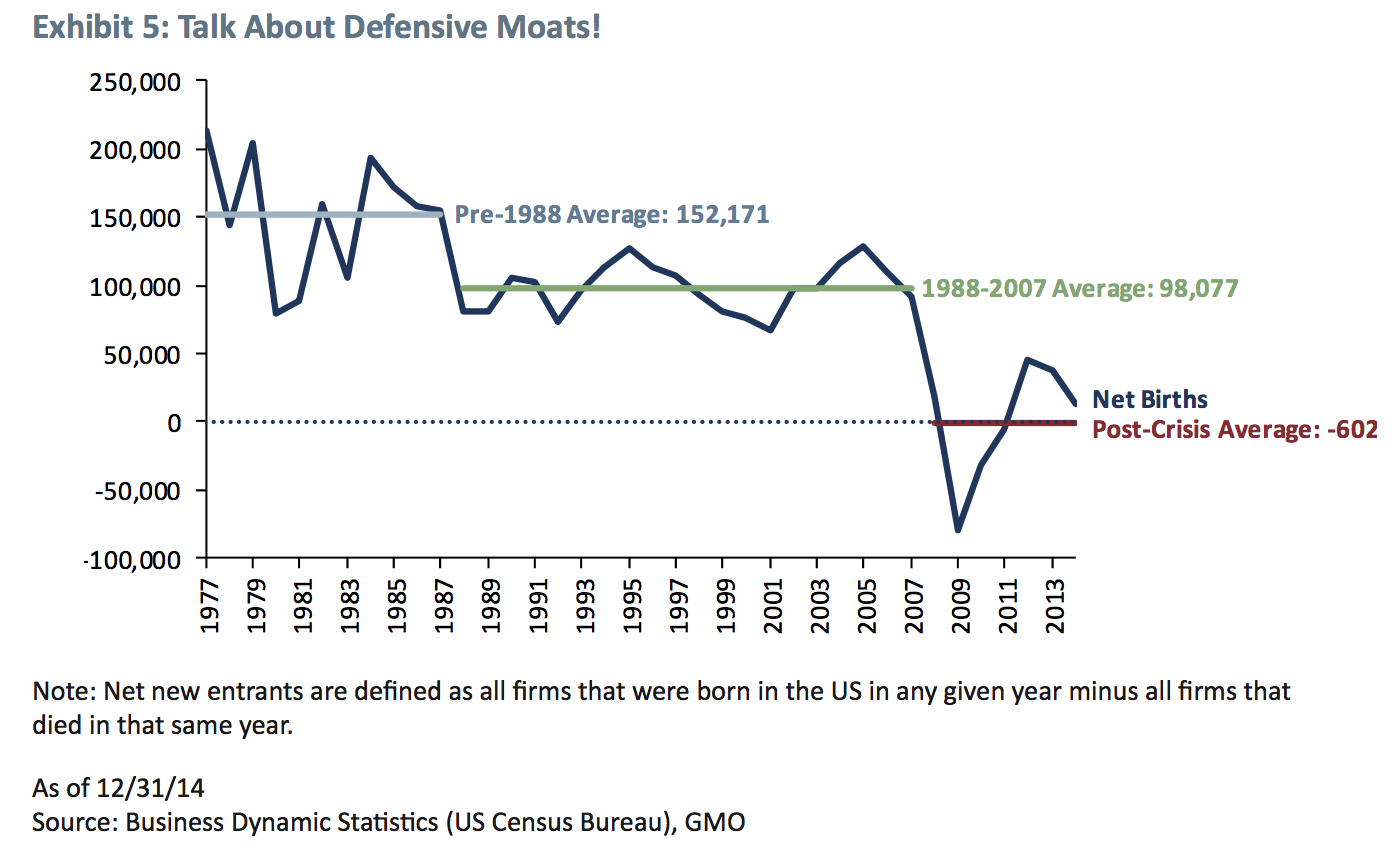Was steht hinter den Rekordmargen der US-Unternehmen?
Die Beiträge von Jeremy Grantham vom Bostoner Vermögensverwalter GMO sind regelmäßig Gegenstand der Diskussion bei bto. In seinem jüngsten Kommentar setzt er sich mit den Profitmargen der US-Unternehmen auseinander, die nicht nur sehr hoch sind, sondern auch noch entgegen aller wirtschaftlichen Theorie hoch bleiben. Es gibt also keinen genügenden Wettbewerb, der dazu führt, dass die Margen sinken. Ein weiterer Grund dürfte sein, dass sich die Gewinne auf wenige Unternehmen mit exorbitanten Margen konzentrieren, die drauf und dran sind ganze Industrien zu kannibalisieren. Sogar die FT greift die Überlegungen Granthams auf: zunächst die Darstellung, die zeigt, dass sich die Umsatzrenditen im S&P 500 und die Gewinne relativ zum BIP nachhaltig erhöht haben:
- “Grantham suspects historically low rates since 1997 combined with higher leverage play a big part in the story. Even so, it can’t be the only explainer. As Grantham says, in a world of reasonable competitiveness higher margins from long-term lower rates should have been competed away. Since they have not, the anomaly must be down to something else.” – bto: Das ist eine entscheidende Frage.
- “Grantham puts the cause down to three other factors: Increased monopoly power, increased political power and increased brand power.” – bto: Das klingt schon fast wie Frau Nahles, die den „Reichen“ zu viel politischen Einfluss unterstellt. Im Unterschied zur These von Frau Nahles dürfte Grantham recht haben.
- “(…) if they had materially more monopoly power, we would expect to see exactly what we do see: higher profit margins; increased reluctance to expand capacity; slight reductions in GDP growth and productivity; pressure on wages, unions, and labor negotiations; and fewer new entrants into the corporate world and a declining number of increasingly large corporations. And because these factors affect the US more than other developed countries, US margins should be higher than theirs. It is a global system and we out-brand them for one thing.” – bto: Zugleich wird der (hoch profitable) Tech-Sektor von den USA dominiert.
- “Grantham links the increase in corporate power over the last 40 years (…) the increasingly weighty regulatory environment which counterintuitively ends up benefitting the larger and more politically savvy corporations. (…) Smaller companies can’t, hence there’s been a steady drop of net new entrants into the US business world since 1970.” – bto: Da genügt ein Blick in die Bankenregulierung, die kleinere Anbieter so belastet, dass es einen Vorteil für die großen gibt.
- “If Grantham is right, investors should start asking what – if anything – can nip this phenomenon in the bud. Grantham indicates higher rates may do the trick. Problem is, those are unlikely to come about any time soon. Until they do, it’s likely abnormally high corporate profit margins will remain a thing or even intensify. (…) investors should brace themselves for continued higher multiples than those of the old days.” – bto: Bedeutet das dann aber auch, dass die Börsen doch nicht zu hoch bewertet sind?
- “All in all, from the many possibilities, I prefer my suggestion of a 20-year limping regression that takes us two-thirds of the way back to the good old days pre-1997. What I fear is that if I am wrong, it is less likely to be because regression is more dramatic as some die-hard value managers believe than it is to be even slower.” – bto: was noch länger hohe Bewertungen erwarten lässt.
- “The outlook I proposed for the S&P 500 last October of 2.8% real per year for 20 years – the whimper path – has fallen to 2.3% real at recent higher prices.“ – bto: Das dürfte wohl klar sein: immer geringere Erträge beim Tanz auf dem Vulkan.
→ FT (Anmeldung erforderlich): „GMO’s Grantham on what’s driving abnormal profit margins“, 2. Mai 2016
Und hier der Link zur Studie:










